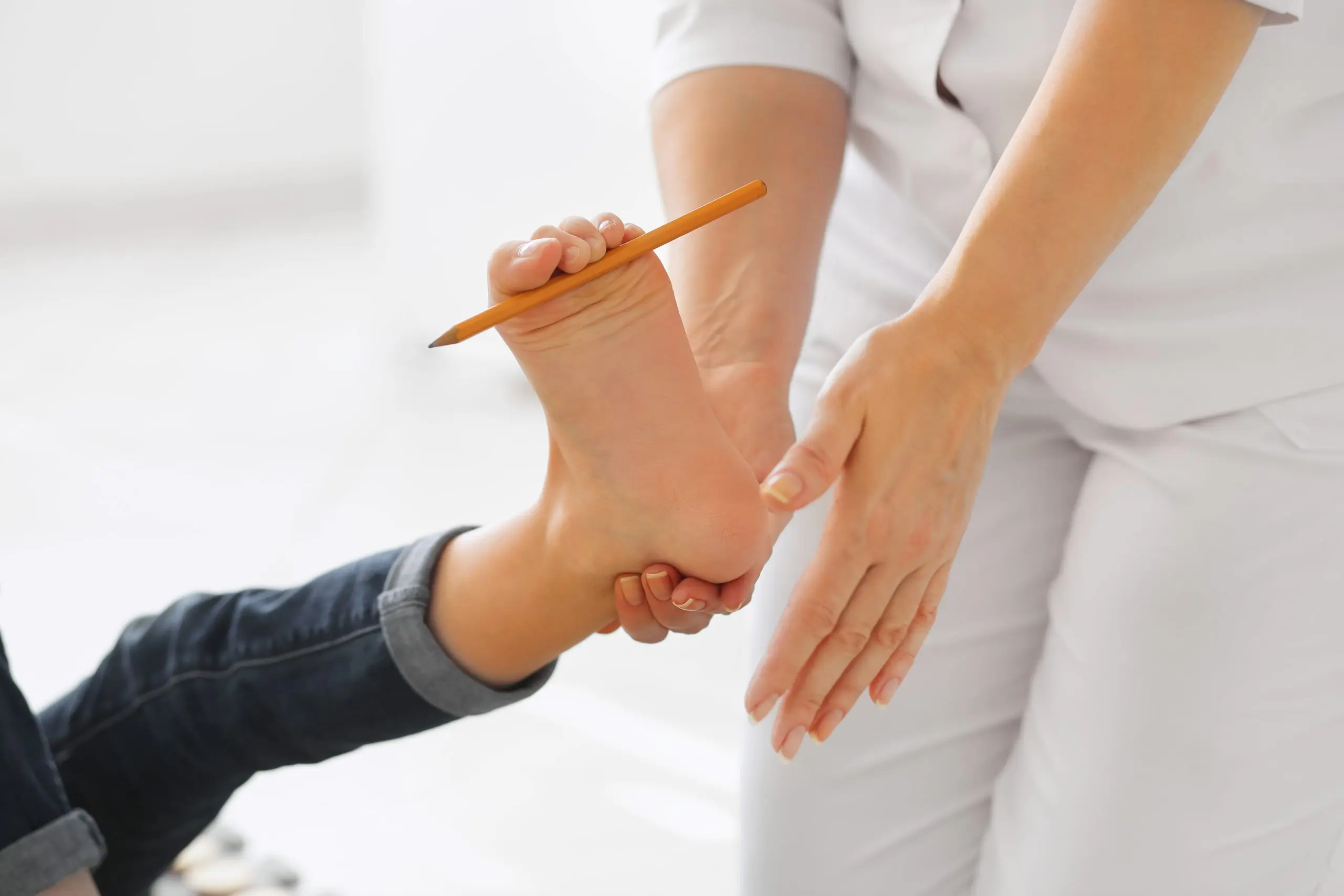
All newborns are born with flat feet. When a toddler is beginning to walk, the arch of the foot, in particular, will develop. You can also check if your child has trouble placing his or her foot down or if he or she complains of pain that prevents them from playing. If you are concerned about your child’s comfort, you should contact a podiatrist to ensure that he or she does not have a podiatric issue.
Early signs that a child needs to see a podiatrist
When you become a parent, it is natural to be concerned about your child’s development: is he or she developing fast enough? Are they gaining enough weight? It might also be about learning to walk and developing their feet. Is it possible that your child’s feet are facing in or out? Is it common for your child’s feet or legs to hurt?
There is normally no reason to be concerned until your kid has mastered walking, as the form of a baby’s legs is still developing. The muscles progressively develop, and a shaky, even hesitant walk is normal for a newborn who has only recently learned to stand.
However, if you observe that your child is having trouble putting their foot level on the ground after several months of practice, or if they fall down a lot, you may start by looking at the form of their feet.
Is the big toe pointing outward? Is your child suffering from an ingrown toenail? You may also inquire if your child’s feet ache if they are old enough to communicate. If yes, inquire about the location. This will provide you with the necessary information for a podiatric consultation to avoid issues. The sooner you approach a problem, the easier it will be to solve.
Warning signs that your child needs to see a podiatrist soon
A child with foot discomfort that stops him or her from playing needs to see a podiatrist as soon as possible. Of course, it is critical to distinguish between emergency situations resulting from an injury and other crucial cases that may wait a few days until the podiatrist’s visit.
Because falls are inextricably linked to learning to walk, it is typical for your kid to take some time to discover his or her footing. Even if their feet get trapped in the carpet or slip on the tile floor on a regular basis, toddlers soon learn to run or walk. It only becomes concerning when your child refuses to stand or walk after a few hours.
In this scenario, it is essential to look for swelling or pain in your child’s foot and ankle. You can gently palpate it while asking how it feels and waiting for a response. If you have any worries, see a podiatrist right away for treatment.
If your child, on the other hand, complains of pain or discomfort but is able to walk, you should make an appointment with your podiatrist. Simultaneously, you can learn about techniques to alleviate the discomfort before the appointment.
Beyond noticing symptoms, routine follow-ups and consultations are in order
When a baby is born, it is common to schedule visits with the family doctor or a pediatrician. These follow-up sessions allow young parents to keep track of their children’s growth and development while also getting answers to their new inquiries.
Giving your child’s foot health the same amount of care as your own will help him or her, avoid having more significant problems as they grow. A podiatric problem can disrupt the overall musculoskeletal position of the body’s lower limbs, causing excruciating pain.
Even before your baby has mastered walking, podiatrists from the FootNetwork clinics can meet with you to answer your questions and address your concerns. An initial meeting can be scheduled to conduct the first evaluation and, if necessary, follow-up sessions. Establishing a routine can assist you in avoiding the consequences of bad posture. Sitting in a “W” or sleeping on one’s stomach, for example, may appear innocent but has a negative impact on a child’s legs and feet.
Finding podiatric support to follow my child’s foot development
Inquire about your child’s podiatric checkups with the FootNetwork’s network of foot health specialists, whether it is for a preventative meeting or to report a suspicion of a podiatric problem.